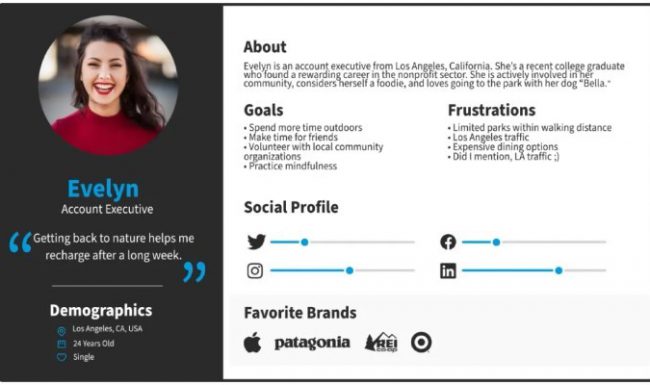
Welcome to this comprehensive lesson on mastering the buyer’s journey for your dental practice! If you’re looking to skyrocket your patient growth and boost your online presence, you’re in the right place.
We’ll explore basic journey mapping to advanced strategies that will help you attract more patients and build long-lasting relationships. We’ll cover everything from common mistakes to best practices, with examples and actionable tips along the way.
Grab your notebook, your patient personas, a cup of your fav beverage, and let’s get started transforming your dental practice together!
The buyer’s journey is the process your potential patients go through as they move from first learning about your dental practice to becoming loyal advocates.
By understanding the stages of the buyer’s journey, you can create targeted marketing strategies that address your audience’s needs at each step, ultimately increasing conversions and patient satisfaction.
Businesses that excel at lead nurturing (i.e. addressing the needs of their personas) generate 50% more sales-ready leads at a 33% lower cost.
So, mastering the buyer’s journey is crucial if you want to grow your dental practice.

The buyer’s journey for dental patients has three main stages:
Creating a visual representation of the buyer’s journey helps you better understand your patients’ path to scheduling an appointment. Let’s explore how to map the buyer’s journey, identify touchpoints, and analyze gaps and opportunities.
Step 1: Divide the journey into three stages: Awareness, Consideration, and Decision.
Step 2: List the actions, thoughts, and emotions patients experience at each stage. You can use sticky notes or a digital tool like Miro to create this visualization.
Step 3: Draw arrows or lines connecting the stages, indicating the flow from one stage to the next.
Step 1: At each stage, identify the points where patients interact with your practice. These can include website visits, social media engagement, email newsletters, or phone calls.
Step 2: Determine which touchpoints have the most significant impact on patients’ decisions to schedule an appointment.
Step 3: Assess the quality of interactions at each touchpoint, ensuring they provide a positive patient experience.
Example: In the Consideration Stage, touchpoints could include reading online reviews, browsing your website’s service pages, and engaging with your social media content.
Step 1: Review your visual representation and identify any missing touchpoints or areas where patients may disengage.
Step 2: Investigate reasons for disengagement, such as a lack of information or confusing website navigation.
Step 3: Identify opportunities to enhance patient engagement, like offering a live chat feature, creating a FAQs page, or improving your online scheduling process.
By mapping the buyer’s journey, you can better understand the patient experience, identify critical touchpoints, and discover areas for improvement. This process can help you optimize your dental practice’s marketing strategy and ultimately increase appointment bookings.

Let’s dive into some advanced strategies to optimize the buyer’s journey on your dental website and drive patient growth.Better understand your patients’ path to scheduling an appointment and beyond.
Follow these steps to create content tailored to each stage of the buyer’s journey:
To create a personalized online experience for your buyer personas, try these tips:
Social proof and testimonials can be powerful tools in guiding potential patients through the buyer’s journey. Here’s how to leverage them effectively:
By implementing these advanced strategies, you’ll elevate your online reputation and attract more patients to your dental practice.

Follow these best practices on your dental website to create a smooth and effective process that resonates with your audience:
By following these best practices, you’ll create a more engaging and effective buyer’s journey on your dental website, ultimately leading to higher patient satisfaction and increased appointment bookings.

As you optimize the buyer’s journey for your dental practice, it’s important to avoid common pitfalls that can negatively impact your patients’ experience.. Here are some mistakes to watch out for and how to steer clear of them:
Mistake: Failing to consider what patients are looking for at each stage of their journey can lead to a disconnect between your marketing efforts and their expectations.
Solution: Conduct research using surveys, interviews, and feedback from patients to understand their needs and wants. Make sure to address these needs through targeted content, relevant services, and empathetic communication.
Example: In the Awareness Stage, patients may want educational content about dental issues and treatments. Create blog posts or videos that provide this information to meet their needs.
Mistake: Generic content can fail to resonate with your target audience.
Solution: Ensure your content is tailored to your buyer personas and addresses their specific needs and pain points.
Example: Create blog posts or videos that target Busy Becky’s desire for convenience or Nervous Ned’s dental anxiety.
Mistake: Neglecting to engage with patients after their appointments can lead to a lack of trust and reduced patient retention.
Solution: Develop a follow-up strategy that includes appointment reminders, post-treatment care instructions, and satisfaction surveys. Maintain consistent communication to ensure patients feel supported and valued.
Example: Send personalized follow-up emails after each appointment, providing care tips, answering any questions, and encouraging patients to schedule their next visit.
Mistake: Failing to measure the results of your marketing efforts can make it difficult to identify areas for improvement and determine the return on investment (ROI).
Solution: Establish key performance indicators (KPIs) to track your buyer’s journey’s success, such as website traffic, conversion rates, and patient retention. Use tools like Google Analytics to gather data and measure your progress.
Example: Track the number of new patient appointments scheduled through your online booking system and calculate the conversion rate from website visitors to appointments.
Mistake: The buyer’s journey isn’t static. Failing to continuously test and adjust your strategies to stay ahead of the competition will soon find your messaging stale and disconnected from your patients evolving needs.
Solution: Create a schedule for quarterly reviewing and adding any missing elements to your patients’ journeys. Also, in each area your marketing make sure to always be testing something against your previously best performing messaging.
Example: Conduct A/B tests on your website’s CTAs, headlines, or email subject lines to determine which versions perform best.
Mistake: Not being consistent can lead to a loss of trust with your audience. If they don’t know what to expect when they interact with your brand, there’s a good chance they’ll go somewhere they can find an experience they can rely on.
Solution: Ensure that your branding and messaging are cohesive across all touchpoints in the buyer’s journey.
Example: Use a consistent color scheme, logo, and tone of voice throughout your website, social media channels, and email communications.
By avoiding these common mistakes, you can create a more effective buyer’s journey for your dental practice, leading to increased patient satisfaction and a higher appointment booking rate.

In this section, we’ll explore some general examples and scenarios that demonstrate the power of effectively implementing the buyer’s journey in dental marketing. These examples will highlight the impact of a well-thought-out strategy on attracting and retaining patients.
A family dentistry practice noticed that their website traffic wasn’t translating into new patient appointments. They decided to focus on creating engaging content for the awareness stage, targeting potential patients who might be searching for information on dental care for their children.
They created a series of blog posts and infographics on topics like “The Importance of Early Dental Care” and “How to Make Dental Visits Fun for Kids.” These resources were shared on social media and optimized for search engines. As a result, their website traffic increased, and they began to see more inquiries from parents looking for a family dentist.
A cosmetic dentistry practice wanted to showcase the life-changing impact of its services. They decided to focus on the consideration stage, creating video testimonials from satisfied patients sharing their experiences with various cosmetic procedures.
These videos were prominently displayed on the practice’s website and shared on social media. By showcasing real-life results and happy patients, the practice was able to build trust with potential patients and encourage them to schedule a consultation.
A dental implant practice recognized that their website visitors often left without taking any action. They decided to focus on the decision stage, making it as easy as possible for potential patients to schedule a consultation or request more information.
They added clear calls-to-action (CTAs) throughout their website, such as “Schedule a Consultation” buttons and contact forms. They also included a live chat feature for immediate assistance. These improvements led to an increase in appointment bookings and inquiries, ultimately driving more new patients to the practice.
These examples demonstrate how dental practices can effectively implement the buyer’s journey to engage potential patients, build trust, and ultimately grow their practice. By focusing on each stage and creating content and experiences tailored to the needs and interests of your target audience, you can drive better results and foster long-term patient relationships.

Navigating the world of user personas and buyer journeys can be much easier with the right tools and resources. Let’s explore some recommendations to help you succeed.
By using these tools and resources, you’ll be well-equipped to develop user personas and optimize the buyer’s journey for your dental website. Stay informed about best practices and trends to keep your strategy fresh and effective.

A: Ideally, yes. Each persona has unique needs and preferences, so mapping a separate journey for each one will help you deliver personalized experiences and more effectively guide them toward scheduling an appointment.
A: Encourage staff to share their insights and experiences with patients. Hold workshops or brainstorming sessions where everyone can contribute ideas. This collaboration will help create more accurate and well-rounded personas and buyer journeys.
A: To create content for each stage, follow these steps:
Identify your buyer personas and their pain points.
Produce and share the content on your website and social media channels.
A: Personalize your website by:
A: Social proof helps build trust with potential patients by showcasing real-world experiences and successes. Use testimonials, reviews, and case studies to demonstrate the effectiveness of your services.
A: Measure success by tracking key performance indicators (KPIs) such as:
Remember, the goal is to create a more personalized experience for your patients, so don’t be afraid to ask for their feedback and make adjustments as needed.
A: Regularly review and update your buyer personas and strategy. This ensures your approach remains relevant and effective. Conduct an annual review or when significant changes occur in your practice or industry that could impact your patients’ journey.

A well-planned buyer’s journey can greatly benefit your dental practice. It guides patients through the process of scheduling an appointment, ensuring a seamless experience. By understanding and addressing your potential patients’ needs at every stage, you can:
Now that you’ve learned the essentials of crafting a buyer’s journey tailored to your dental practice, it’s time to put your knowledge into action. If you need expert assistance or guidance in implementing these strategies, don’t hesitate to reach out to Prosites.
At Prosites, our team of inbound marketing experts is ready to help you optimize your dental website, create engaging content, and attract more patients.
Together, we’ll create a powerful, effective buyer’s journey that resonates with your target audience and drives success for your practice.
To get started, contact us and let us know how we can help transform your dental practice’s online presence.